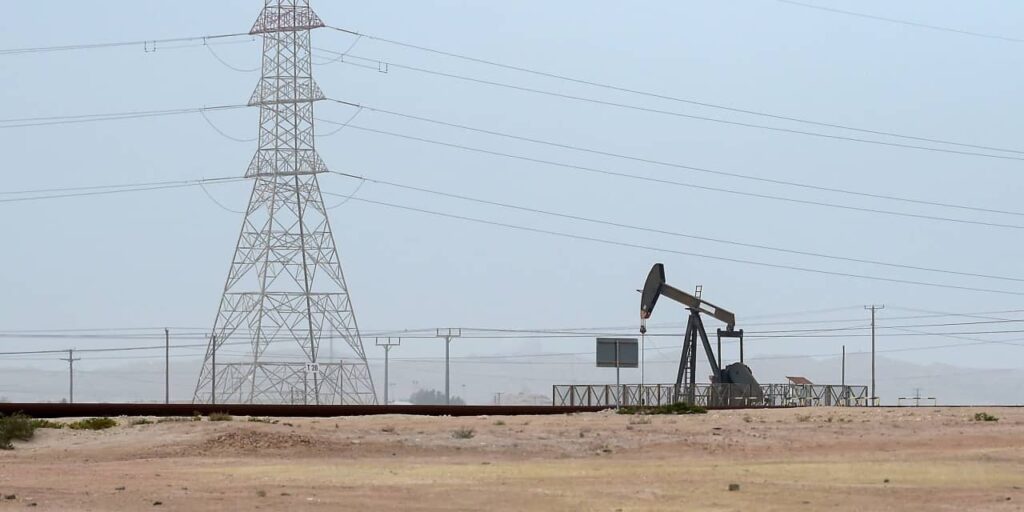Oil futures ticked higher on the final trading day of 2023 Friday, on track for the first losing year since 2020 as concerns about the demand outlook outweighed potential supply disruptions and efforts by OPEC and its allies to limit production.
Price action
-
West Texas Intermediate crude for February delivery
CL00,
+0.38%CL.1,
+0.38%CLG24,
+0.38%
rose 42 cents, or 0.6%, to $72.19 a barrel on the New York Mercantile Exchange. -
March Brent crude
BRN00,
+0.53%BRNH24,
+0.53%,
the global benchmark, was down 56 cents, or 0.7%, at $77.71 a barrel on ICE Futures Europe. -
January gasoline
RBF24,
+0.71%
rose 0.7% to $2.10 a gallon, while January heating oil
HOF24,
+0.07%
edged up 0.1% to $2.558 a gallon. -
February natural gas
NGG24,
-1.10%
fell 0.3% to $2.369 per million British thermal units.
Market drivers
Through Thursday’s close, WTI was down more than 20% in the fourth quarter and on track for a 2023 decline of 10.6%. Brent has tumbled nearly 18% in the final three months of the year, headed for an annual loss of nearly 9%. That would mark the first losing year for both benchmarks since 2020.
Crude had rallied over the summer as the Organization of the Petroleum Exporting Countries and its allies, together known as OPEC+, maintained production cuts, with Saudi Arabia throwing in a voluntary reduction of 1 million barrels a day beginning in July and Russia moving to curb exports. While production cuts have been rolled over into early 2024, oil peaked in late September as expectations for a significant supply deficit failed to materialize.
Increased production by the U.S., with output hitting record levels in 2023, and other non-OPEC producers have also capped upside for crude, analysts said.
Read: Why oil may not see a return to $100 a barrel in 2024
Oil futures jumped in the wake of the outbreak of the Israel-Hamas war in October on fears a broader conflict could crimp supplies from the Middle East, but crude failed to challenge the September highs and soon eroded its geopolitical risk premium. Crude bounced somewhat in December as attacks by Iran-backed Houthi rebels on ships in the Red Sea sparked a round of rerouting, but gains have proven difficult to sustain.
Instead, investors “have started to focus on the risk that there may be excessive supply in oil markets next year, and insufficient demand,” said Marios Hadjikyriacos, senior investment analyst at XM, in a note.
“Even though OPEC+ has taken repeated steps to rein in production and support prices, it is unlikely to pursue the same strategy for much longer, as it would forfeit more market share to U.S. producers who have dialed up their own production to record levels,” he wrote.
Read the full article here

